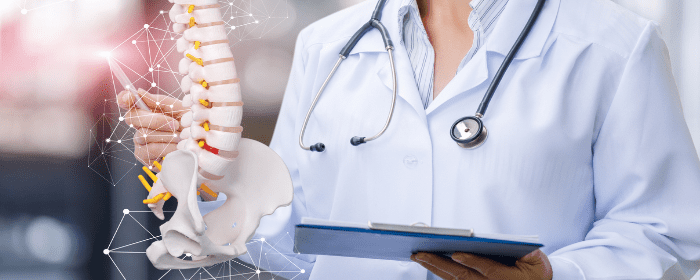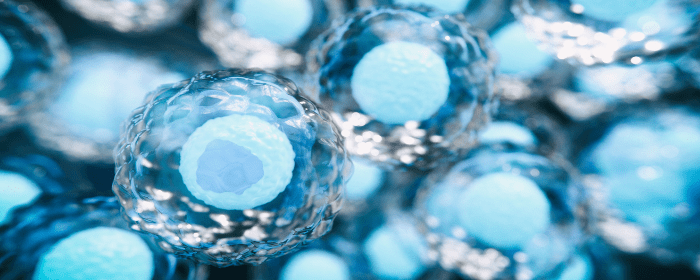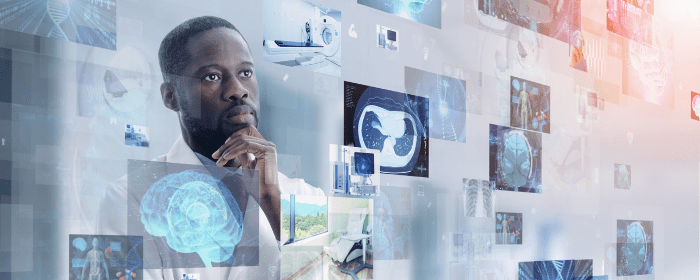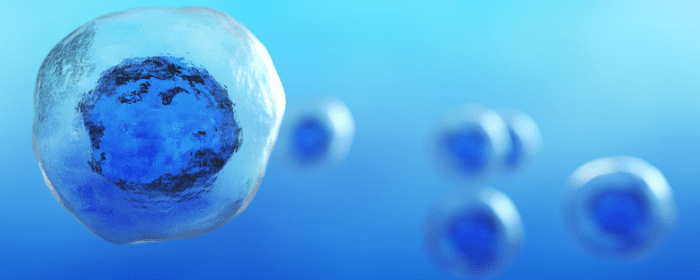
by admin | Mar 5, 2021 | Stem Cell Therapy, Degenerative Disc Disease, Musculoskeletal, Spinal Cord Injury, Stem Cell Research
Recent breakthroughs in the field of regenerative medicine continue to support the tremendous healing potential of stem cell therapy. Until a few years ago, stem cell research was limited to only what could be gathered from the research gathered from embryonic stem cells; this research was limited by the well-documented ethical concerns surrounding the practice of harvesting stem cells from embryonic sources.
Fortunately, alternative – and less controversial – sources of stem cells, harvested primarily from autologous bone marrow and adipose tissue have demonstrated promise in treating many diseases ranging from autoimmune conditions to myocardial infarctions.
Considering this, the ability of adult stem cells to undergo division and multipotent differentiation has garnered the attention of spinal surgeons and specialists around the world, specifically for the potential benefits of these stem cells in the treatment of a variety of spine issues related to neural damage, muscle trauma, disk degeneration as well as it potential in supporting bone and spine fusion.
Stem Cells in Spine Surgery
Although the rate of spinal surgery, and specifically lumbar, cervical and thoracolumbar fusions, has continued to rapidly increase over the last 20 year, there has not yet been a breakthrough in surgical technology that has consistently demonstrated the ability to reduce reoperation rates associated with these procedures; additionally, these procedures have demonstrated little success in reducing the issue of pseudoarthrosis in patients.
As a result, spinal surgeons have begun experimenting with using stem cells to support the process of bone growth and fusion. As stem cell research continued to evolve, the discoveries of the ability of mesenchymal stem cells (MSCs) harvested from bone marrow, adipose tissue, and skeletal muscle differentiate when cultivated in the correct microenvironment has led to the realization that these stem cells demonstrated a significant effect of the process of spinal fusion.
Adding to the potential benefits of these stem cells are several animal model studies confirming the benefits of the much more available, and much easier harvested adipose-derived stem cell (ADSC). In fact, several of these animal studies have confirmed similar fusion results observed when comparing MSCs and ADSCs.
Stem Cells in Disc Regeneration
Changes occurring in the discs of the spine and specifically starting in the second decade of life, contribute to decreased disc height that contributes to the impingement of nerves and the development of lower back pain consistent with Degenerative Disc Disease.
Until recently, treatment of Degenerative Disc Disease was limited to conservative management techniques, including work and lifestyle modifications, physical therapy, medication, and epidural injections, or surgery in the form of disc replacement or spinal fusion.
Although realizing the actual effects of stem cells therapy for treating this condition has been limited in humans (primarily due to concerns associated with the potential for an immune reaction to allogeneic stem cells in humans), several animal studies have demonstrated decreased disc degeneration as well as significant improvement in height and hydration of previously damaged discs. In addition, small-scale studies in humans have demonstrated improvements in pain and disability within three months of stem cell treatment.
Considering this, Schroeder J et al. call for larger clinical trials designed to further explore the benefits associated with using stem cell therapy to treat Degenerative Disc Disease.
Stem Cells in Treatment of Spinal Cord Injury (SCI)
Spinal Cord Injury (SCI) resulting from damage to the spinal cord most often is the result of motor vehicle accidents, falls, or injuries occurring during sports, work, or in the home; currently, the World Health Organization (WHO) estimates that worldwide between 250,000 and 500,000 people suffer an SCI each year[1].
SCIs range in severity, but most often are accompanied by some degree of tissue damage and/or cell death. As a result, spine surgeons have been exploring the potential of stem cell transplantation with the hope of supporting functional recovery after an SCI is sustained.
There are several phases associated with SCI. Regardless of the specific phase associated with an SCI, scientists have realized that creating a microenvironment that enhances neuron and axon regeneration appears to be the most desirable outcome of stem cell therapy. It is hypothesized that this is best achieved by suppression of the inflammation that typically accompanies cell apoptosis and necrosis.
Although embryonic stem cells appear to provide greater differentiation than adult stem cells, the ethical concerns surrounding their use have limited further exploration of these potential benefits. However, to date, adult mesenchymal stem cells (MSCs) used in the treatment of SCI have not demonstrated immunologic reactions and have demonstrated the potential to promote axonal regeneration, suppress demyelination, induce nerve regeneration, and induce nerve regeneration.
Unfortunately, the in vivo differentiation of MSCs into neuron-like cells has been documented to be inefficient, meaning that MSCS is currently not capable of directly repopulating or physically restoring the tissue damaged in SCI.
While there have since been studies exploring the transplantation of neural stem cells (NSC) that have demonstrated sensory and motor improvements after stem cell transplantation and when combined with other cell and growth factors, these improvements were not statistically significant. Considering this, the authors of this study indicate that it’s difficult to provide a definitive statement on the clinical potential of stem cell therapy for the treatment of SCI.
In conclusion, the authors point out that there are additional areas, including iatrogenic nerve and muscle injury resulting from spinal surgery, that have not yet been clinically addressed. The authors also point out that greater standardization of in vitro experimentation and animal models may aid in the speed of translation of stem cell therapy in spinal surgery.
Source: (n.d.). Stem cells for spine surgery – NCBI – NIH. Retrieved from https://www.ncbi.nlm.nih.gov/pmc/articles/PMC4300930/
[1] “sheets/detail/spinal-cord-injury – WHO | World Health Organization.” 19 Nov. 2013, https://www.who.int/news-room/fact-sheets/detail/spinal-cord-injury.

by admin | Feb 26, 2021 | Stem Cell Therapy, Mesenchymal Stem Cells, Multiple Sclerosis, Stem Cell Research
Multiple sclerosis (MS) is a progressive and disabling autoimmune disease that affects the brain and central nervous system. As MS progresses, the body’s immune system attacks the protective sheath (myelin) that covers nerve fibers resulting in axonal damage and loss that eventually results in paralysis of the limbs; the condition also contributes to a number of other serious communication problems between your brain and the rest of the body[1], including numbness, tremors, and issues affecting vision and speech.
To date, no effective therapeutic medication or treatment for MS exists and medication prescribed for this disease is done so for the purpose of alleviating symptoms and chronic inflammation associated with it; several of these drugs, and especially those with immunomodulatory and immunosuppressive properties have demonstrated to be only partly effective in easing autoimmune reactions.
While current immunotherapies have demonstrated to be effective in reducing the reactivity of autoimmune anti-myelin and MS relapse rate, there remains no approved method for treating or slowing progression of the disease or for repairing myelin damaged as a result of it. As a result, Bejargafshe et al. point out that finding an appropriate clinical treatment for improvement of the neurological damage caused by MS is essential.
The authors also call attention to the numerous studies demonstrating the benefits of mesenchymal stem cells (MSCs) in creating a number of different of autoimmune conditions, including modulating the immune response in MS patients. MSCs are specific multipotent and self-renewing stem cells that have demonstrated to be differentiated into several cell types and can be easily isolated from bone marrow and adipose tissue; this means the patient can serve as a donor for him/herself without risk of rejection.
Bejargafshe et al.’s study reviews several clinical trials evaluating the effectiveness of MSC therapy for MS patients, including several specific clinical trials examining the effectiveness of bone marrow-derived MSCs, adipose-derived MSCs (ADMSCs), USMSCs, human fetal-derived neural stem cells (hNSCs), MSC-derived neural progenitors (MSC-NPs), and hematopoietic stem cells (HSC).
The authors of this study conclude that cell-based therapies, including those mentioned in this study, have shown to repair the CNS, protect against inflammation caused by an autoimmune response, are safe and effective, and demonstrate new opportunities for preventing and treating a wide range of neurodegenerative diseases, including MS.
In addition, the authors concluded that while nearly all of the various types of stem cells evaluated provide benefits, adult MSCs, because of their safety and ease of extraction, are the most common source of stem cells used for this application, with bone marrow being the major source of MSCs used. Clinical trials indicate the observed multipotency and highly-differentiated potential of UC stem cells also make them a viable treatment option, but the need to maintain a supply of UC stem cells through cell banks limit their appeal on the basis of availability.
Interestingly, among the potential cell therapies evaluated, adult adipose stem cells (ASC) appear to be among the most suitable cells for the treatment of MS. In addition to being very safe to use, adult ASCs are easy to separate from adipose tissue, are available from several different parts of the body, are available in a large concentration per unit area, and relatively inexpensive when used in a stem cell transfusion. Considering the benefits listed above, as well as those observed in clinical studies, the authors conclude that ASCs and HSCs are appropriate candidates for the treatment of MS.
Source: (2019, December 27). Safety and efficacy of stem cell therapy for treatment of neural …. 1, from https://www.ncbi.nlm.nih.gov/pmc/articles/PMC6987330/
[1] “Multiple sclerosis – Symptoms and causes ….” 12 Jun. 2020, https://www.mayoclinic.org/diseases-conditions/multiple-sclerosis/symptoms-causes/syc-20350269.

by admin | Feb 19, 2021 | Multiple Sclerosis, Mesenchymal Stem Cells, Stem Cell Research, Stem Cell Therapy
Progressive multiple sclerosis is a significant disruptive neurodegenerative disease that interferes with the brain’s ability to control the body; the condition continues to get worse over time and, to date, has no known therapeutic treatment or cure.
Petrou Et. Al’s double-blind clinical trial examined the therapeutic efficacy of mesenchymal stem cell (MSC) transplantation in active progressive multiple sclerosis and explored the most favorable route of cell delivery (intravenous or intrathecal injections).
Prior to this study, previous trials examining various types of MSC administration in the therapeutic treatment of multiple sclerosis have demonstrated the clinical safety of MSC administration but have not identified treatments to suppress central nervous system (CNS) inflammation associated with the progression of diseases like progressive multiple sclerosis.
Several studies have also demonstrated that CNS loses the ability to repair and regenerate over time. Considering that stem cells, and specifically MSCs, have demonstrated to provide additional benefits, including immunomodulatory and neurotrophic effects, when used in the treatment of stroke and multi-system atrophy, they appear to be a viable potential therapeutic treatment for active progressive multiple sclerosis.
For the purposes of Petrou Et. Al’s study, a total of 48 participants with a mean disease (active progressive multiple sclerosis) duration of 12.70 years were included as part of this study either as part of a placebo group, MSC-IV group, or MSC-IT group; selected treatment was applied at 3-month and 6-month marks of the study.
At the conclusion of this study, the authors report no serious, treatment-related adverse effects were observed and significantly fewer patients in the MSC-IT and MSC-IV groups experienced treatment failure when compared to the placebo group.
By reviewing changes observed in ambulation index, the sum of functional scores, 25-foot timed walking test, PASAT and OWAT/KAVE cognitive test, and the rate of change in T2 lesion load on MRI observed after the 6th-month treatment, researchers also found beneficial effects in both the MSC-IT and MSC-IV groups.
It appears that repeated intrathecal injection of MSC during the second round of treatment (Month 6) significantly improved the effects measured during the first round of similar treatment (Month 3); similar, but less significant benefits were also observed in the MSC-IV group. Specifically, researchers report that these observed benefits may indicate the involvement of immunomodulatory and neuroprotective mechanisms.
Of particular interest is the fact that the benefits with clinical significance were observed in participants with progressive multiple sclerosis found to be previously unresponsive to conventional immunotherapies and currently with limited treatment options.
In conclusion, this study found short-term clinical efficacy and perhaps neuroprotection by administration of MSCs to participants with progressive multiple sclerosis. The researchers also found that while repeated injections of both MSC-IT and MSC-IV produced beneficial effects, intrathecal administration appears to produce more clinically significant and observable benefits than MSC-IV.
These findings are recommended for use in the design of future studies examining the impact of cell therapy on neurodegeneration and neuronal regeneration and warrant Phase III study to confirm the therapeutic potential of cellular therapy in neurodegenerative and neuroinflammatory diseases, including multiple sclerosis.
Source: (2020, December 1). Beneficial effects of autologous mesenchymal stem … – PubMed., from https://pubmed.ncbi.nlm.nih.gov/33253391/

by admin | Feb 5, 2021 | ALS, Mesenchymal Stem Cells, Stem Cell Research, Stem Cell Therapy
Amyotrophic lateral sclerosis (ALS), also known as motor neuron disease or Lou Gehrig’s disease, is a disease that gradually paralyzes people because the brain is no longer able to communicate with the muscles of the body that we are typically able to move at will[1]; as ALS progresses, people will lose the ability to walk, talk, swallow, and eventually breathe.
While no treatment to prevent or even slow the progression of, ALS currently exists, recent findings indicate that neurotrophic factors (NTFs) have been shown to potentially improve the survival of motor neurons in ALS. While a single administration of NTFs has not been effective in extending the life of these motor neurons, the review suggests the direct delivery of multiple NTFs by transplantation to the CNS has proven effective in animal studies.
Specifically, the observed benefits of mesenchymal stem cells (MSC) transplanted from bone marrow or adipose suggest improved neurological stabilization in patients with ALS. As such, the authors of this review have developed a method that produces a strong synergistic effect when introducing a combined delivery of neurotrophic factors in patients with ALS.
The authors, in this review, report on the safety and clinical effects resulting from phase 1 / 2 and 2a clinical trials in which autologous MSC-NTS cells were transplanted in patients with ALS. Both of these studies were considered open-label proof of concept studies where patients were followed up for 3 months before transplantation and 6 months after receiving MSC-NTS transplantation.
No serious adverse events were associated with MSC-NTF cells intramuscular (IM) injections, intrathecal injections (IT), or a combination of both (IT+IM) during these studies.
Additionally, neurotrophic growth factor secretion of patients’ cells was shown to be induced in the MSC-NTF cells when compared to MSCs of the same patient prior to differentiation. In all samples, MSC-NTF cells demonstrated increased secretion of NTFs when compared to non-differentiated MSCs from the same patient.
As a result of this study, the authors have concluded that IT and IM injections of MSC-NTF cells in patients with ALS are safe and well-tolerated. While not the primary focus of the study, the findings also demonstrated clinically meaningful benefits specifically induced by intrathecal treatment with MSC-NTF cells, including potentially slowing the rate of ALS progression.
Considering that neurologists specializing in the treatment of ALS consider a reduction in ALS-FRS-R slope of 25% or more to be clinically significant, the change in ALS progression rate observed after MSC-NTF cell transplantation in this study may indicate a clinically meaningful effect to be confirmed in future clinical trials.
Source: (n.d.). Safety and Clinical Effects of Mesenchymal Stem Cells Secreting …. Retrieved from https://pubmed.ncbi.nlm.nih.gov/26751635/
[1] “Amyotrophic lateral sclerosis (ALS) – Symptoms and causes – Mayo ….” 6 Aug. 2019, https://www.mayoclinic.org/diseases-conditions/amyotrophic-lateral-sclerosis/symptoms-causes/syc-20354022. Accessed 15 Feb. 2021.

by admin | Jan 8, 2021 | Stem Cell Therapy, Heart Failure, Mesenchymal Stem Cells, Stem Cell Research
After a decade of research, the safety and efficacy of intravenous infusion of bone-marrow-derived stem cells for therapeutic treatment in individuals with heart failure have been well established; however, until Bartolucci et al’s phase 1 / 2 randomized controlled trial of intravenous infusion umbilical cord mesenchymal stem cells (UC-MSCs) on heart disease, no clinical studies have examined the safety and efficacy of similar intravenous infusion of UC-MSCs in patients with chronic systolic heart failure (HFrEF).
Specifically, therapeutic treatment of heart failure with stem cells harvested from bone marrow has demonstrated improved cardiac function and regeneration of damaged heart tissue resulting in moderate clinical benefits in survival, left ventricular function, and improved quality of life in patients with HFrEF.
While MSCs isolated from adult bone marrow have demonstrated benefits, the invasive harvesting procedure and differentiation potential related to donor age and comorbidity associated with BM-MSC present several disadvantages when evaluating for clinical application.
On the other hand, when compared to BM-MSCs, umbilical cord-derived MSCs, or UC-MSCs, are easily attainable, demonstrate less cellular aging, and are not obstructed by potential ethical concerns.
With preclinical research demonstrating UC-MSC supporting enhanced vascular regeneration and cardiomyocyte protection, Bartolucci et al’s study aimed to evaluate the safety and efficacy of intravenous infusion of UC-derived stem cells for therapeutic treatment in individuals with heart failure.
This RIMECARD trial was the first randomized, double-blind, placebo-controlled study of intravenous infusion of allogeneic UC-MSCs in patients with chronic HFrEF. Although there has been limited experience on intravenous administration of MSCs in patients with cardiovascular diseases, it has been well established that MSC-based therapies are considered safe for therapeutic use in this application; further review of prospective clinical trials also did not detect a risk of infusion toxicity, organ system complications, infection, death, or malignancy in treated patients.
The results of the RIMECARD trial demonstrated that delivery of UC-MSCs seems safe for use in the HFrEF population with observable improvements in LVEF in patients receiving intravenous UC-MSC treatments. Researchers have proposed many potential reasons for the clinical benefits of the application of UC-MSCs among patients with heart failure including reduction in myocardial cell apoptosis, less myocardial inflammation and myocardial fibrosis, the formation of new cardiac-related blood vessels, and increased cell differentiation.
One notable observation of this study was the notable cardiomyogenic differentiation potential between UC-MSCs and BM-MSCs. It appeared that BM-MSCs presented a more favorable profile of transcription factors related to cardiac differentiation; however, findings demonstrating poor retention rates after intramyocardial injections of BM-MSCs render them potentially insufficient for what is required to be deemed clinically beneficial.
By comparison, the paracrine factors observed demonstrate a significant advantage of UC-MSCs over BM-MSCs with the most prominent difference being the expression of hepatocyte growth factor in UC-MSCs from all tested donors (BM-MSCs showed low to undetectable levels).
While further analysis and outcomes were considered limited based on small patient sample groups, IV infusion of UC-MSCs was found to be feasible and safe among patients with HFrEF, inducing no humoral immune response among test subjects. While findings suggest significant improvements in left ventricular function, functional status, and quality of life, the impact of UC-MCSs in patients with heart failure would be further supported through larger clinical trials.
Reference: (2017, September 26). Safety and Efficacy of the Intravenous Infusion of Umbilical …. Retrieved December 28, 2020, from https://www.ahajournals.org/doi/10.1161/CIRCRESAHA.117.310712

by admin | Jan 3, 2021 | Stem Cell Therapy, Mesenchymal Stem Cells, Stem Cell Research
Multiple system atrophy (MSA) is a rare, progressively degenerative neurological disorder that affects several of the central nervous system’s involuntary (autonomic) functions, including blood pressure, breathing, bladder function, and motor control.
Similar to Parkinson’s disease in both symptoms and progression, MSA has an average survival time of 7-9 years with no known treatment; the condition is generally characterized by slowed movement, rigidity of the muscles, and loss of balance.
With no effective medical treatment for MSA, current methods of treatment involve those known to reduce or manage symptoms and enhance care. However, with the rapid evolution of therapeutic treatments involving the use of stem cells, new research is exploring this application in the hopes of treating MSA and other degenerative diseases.
Stem cells and specifically adult neural, mesenchymal, and pluripotent stem cells are currently being researched in preclinical and clinical trials.
Examination of neural stem cells found in cerebral ventricles, the hippocampus, and within the striatum of the brain tissues, has revealed them to be self-renewing and have the potential to quickly differentiate. When studied in models using mice, neural stem cells were shown to mitigate into lesions of the brain, proliferate, and differentiate into three distinct types of nerve cells. Considering this, researchers believe neural stem cells to be the ideal donor cell for treating MSA. The biggest drawbacks associated with neural stem cells appear to be the difficulty associated with collecting them from the central nervous system.
Mesenchymal stem cells, or MSCs, found in bone marrow, umbilical cords, and adipose tissue are easy to obtain and have been demonstrated to be self-renewing and differentiate quickly. MSC animal models have also demonstrated improvement in Parkinson’s-associated symptoms, the ability to hinder immuno-inflammatory reactions, and the ability to improve overall cognitive ability – all without additional side effects.
Human umbilical cord blood, or hUCB-MNC, is also a known source of stem cells, and specifically mononuclear cells, which have been found to have high nerve regeneration functionality. In addition, hUCB-MNC are easy to collect, separate, and survive longer than other stem cells. When transplanted into the brain, animal studies have demonstrated hUCB-MNC’s ability to secrete nerve growth factors, repair damaged cells, and protect neurons. Other studies have shown that hUCB-MNC appears effective in treating a variety of nervous system diseases by reducing inflammation and regulating immunity within the central nervous system.
Regardless of the characteristics, benefits, and source of the various stem cells, the treatment appears to rely heavily on the method of transplantation for treating MSA. Specifically, successful transplantation relies on the stem cells’ ability to migrate to the CNS and integrate into tissues.
The lack of progress in developing successful treatment options for MSA has led to examining stem cells’ ability to self-replicate, self-renew, differentiate, and secrete neurotrophic factors as a potential treatment method for MSA and other related neurological diseases. As research evaluating the therapeutic benefits of stem cells progresses, the authors recommend continued monitoring of stem cell safety as well as the degree of survival and integration after transplantation into the human body.
Reference: 2018, October 5). Treatment of multiple system atrophy-the past, present and …. Retrieved January 12, 2021, from https://www.ncbi.nlm.nih.gov/pmc/articles/PMC6261842/







 St. Petersburg, Florida
St. Petersburg, Florida
